Effective solid-liquid separation is a critical step when dealing with liquid mixtures. Belt presses and filter presses, as advanced industrial equipment, play a vital role in this process.
Belt press
Working principle of belt press
A belt press is a device used to achieve efficient solid-liquid separation and its working principle is based on a continuous belt filtration system. Below are the working steps of a belt press:
- Feed stage: The liquid-solid mixture (usually suspended solid particles and liquid) is uniformly sprayed or fed into the belt filter system. This usually occurs at the feed end of the belt filter.
- Belt filtration system: In a belt filtration system, the liquid-solid mixture is conveyed onto a continuous porous filter belt. This belt is usually made of abrasion- and chemical-resistant materials to ensure its durability in different industrial environments.
- Moisture removal: As the filter belt moves, moisture from the liquid portion permeates through the porous structure of the belt, creating drainage. This step is the key to achieving dewatering in a belt press.
- Dehydrated solids layer: In the final stage of the process, the filter belt is left with dewatered solid particles. These solids particles form a layer commonly referred to as the dewatered solids layer.
- Unloading: The dewatered solids layer is eventually removed from the filter belt by a robot or other device to become the final product. This process is usually accomplished at the discharge end of the belt filter.
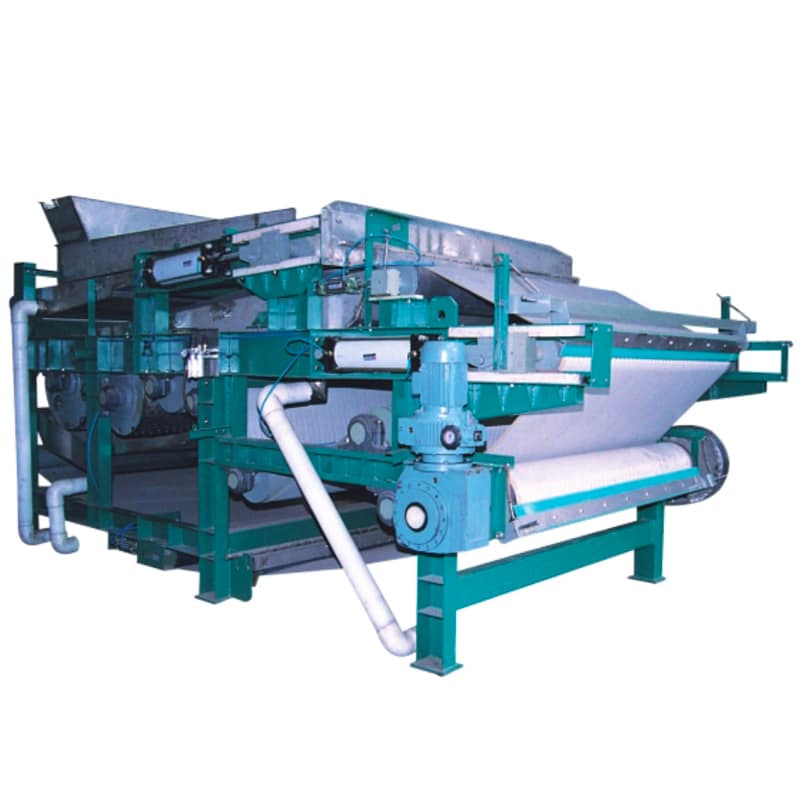
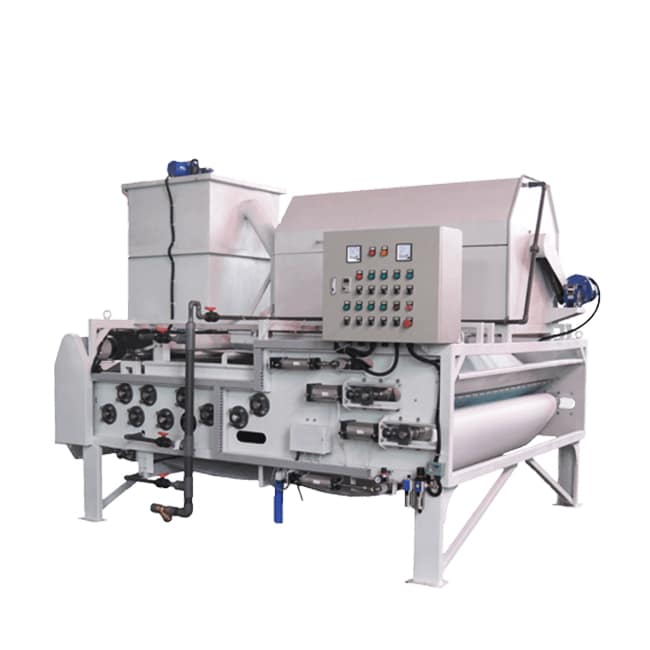
Application areas of belt presses
Wastewater treatment
- Solid-liquid separation: Wastewater typically contains suspended particles and other solid impurities. The belt press, through its continuous belt filtration system, is able to effectively perform solid-liquid separation, separating water from wastewater and producing a dewatered solid residue.
- Efficient dewatering: Since wastewater treatment involves the handling of large amounts of water, the efficient dewatering characteristics of the belt press make it ideal for wastewater treatment plants. Through rapid dewatering, the volume of wastewater is reduced, reducing the burden of subsequent treatment.
- Reduced waste volume: Dewatered solid residues have a lower water content, effectively reducing the volume of treated waste, reducing the cost and environmental impact of waste disposal.
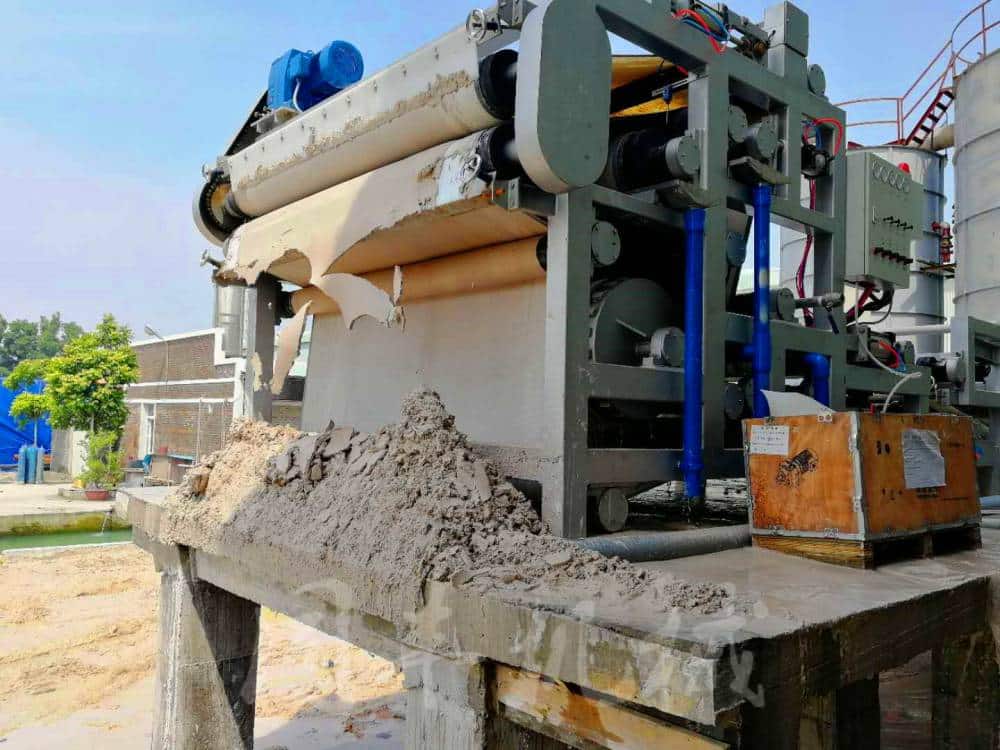
Municipal sludge dewatering
- Dense sludge treatment: In municipal sludge treatment, belt presses are widely used for the treatment of dense sludge. This includes mixed sludge collected from wastewater treatment plants or solid residues from sludge drying.
- High solids loading: Belt presses have the ability to handle high solids loads, effectively processing the water in the sludge to produce a dewatered solid mass.
- Low energy consumption and reliability: The belt press is relatively energy efficient to operate and has low maintenance requirements. This makes it a reliable, cost-effective solution in municipal sludge treatment facilities.
Environmental protection and sustainability
- Wastewater Reuse: Wastewater treatment through belt presses effectively extracts and recovers water, facilitating the reuse of wastewater in an environmentally friendly and sustainable manner.
- Reduced sludge disposal costs: The efficient dewatering characteristics of belt presses reduce the cost of waste treatment and disposal, while reducing reliance on landfill and incineration facilities.
Advantages of belt presses
- Continuous operation
Belt presses stand out for their continuous operation, providing efficient, uninterrupted solid-liquid separation processes for industrial production. This continuous operation offers the following key advantages:
High capacity: Due to its ability to continuously process liquid-solid mixtures, the belt press is able to maintain high capacity when processing large volumes of wastewater or other liquid wastes. This is critical in industrial environments where continuous production is required.
Reduced downtime: Continuous operation reduces downtime and maintenance, making the belt press ideal for production lines that require consistent and reliable operation.
- Compact design
The compact design of the belt press allows it to occupy a small area in a limited space. This compact design offers the following advantages:
Space efficiency: In factories, treatment plants or other locations where space is limited, the compact design of the belt press maximizes the use of available space, leaving enough room for other equipment or operations.
Ease of installation: The compact appearance and construction make belt presses easier to install than other, more bulky solid-liquid separation equipment, reducing layout and space planning challenges.
- Adaptability in limited space
Adaptable: The compact design of the belt press enhances its adaptability, making it easier to integrate into industrial scenarios with limited space. This is especially important in environments where the footprint of the equipment needs to be minimized.
Versatile applications: Thanks to their compact appearance, belt presses find applications in a wide range of industries, including wastewater treatment, mining, food processing, etc., providing flexible solutions for different industries.
Filter press
Principle of the filter press
A filter press (plate and frame filter press) is a device used to perform solid-liquid separation based on a combination of filter plates and frames and a pressure-operated dewatering mechanism. The following is the basic working principle of a filter press:
Filter plates and frame:
A filter press consists of a series of filter plates arranged within a frame. These filter plates are usually made of sturdy materials that are resistant to corrosion and pressure.
The frame holds the filter plates together to form a chamber. A series of filter chambers are formed in the process.
Feeding and dewatering process:
A liquid-solid mixture (usually sludge or suspended solid particles mixed with liquid) is pumped or injected into the filter chamber.
Press operation begins with pressure being applied to the liquid-solid mixture. This pressure can be applied by the self-weight of the liquid or by an external pressure system.
Pressure operates the dewatering mechanism:
Due to the presence of the filter plates, the liquid is unable to pass through the gap between the plates and the frame and is forced to drain through the filter media (usually filter cloth) on the plates.
This process stops solid particles from forming a solid layer and the discharged liquid is called the filtrate.
Dewatering and solids collection:
As the dewatering process continues, the filtrate is discharged through the filter plates and frame, while the dewatered solids remain on the filter plates to form a solid layer.
When dewatering of the entire filter chamber is complete, operation of the press is suspended, the filter plates and frame are separated, and the dewatered solids layer is collected or discharged.
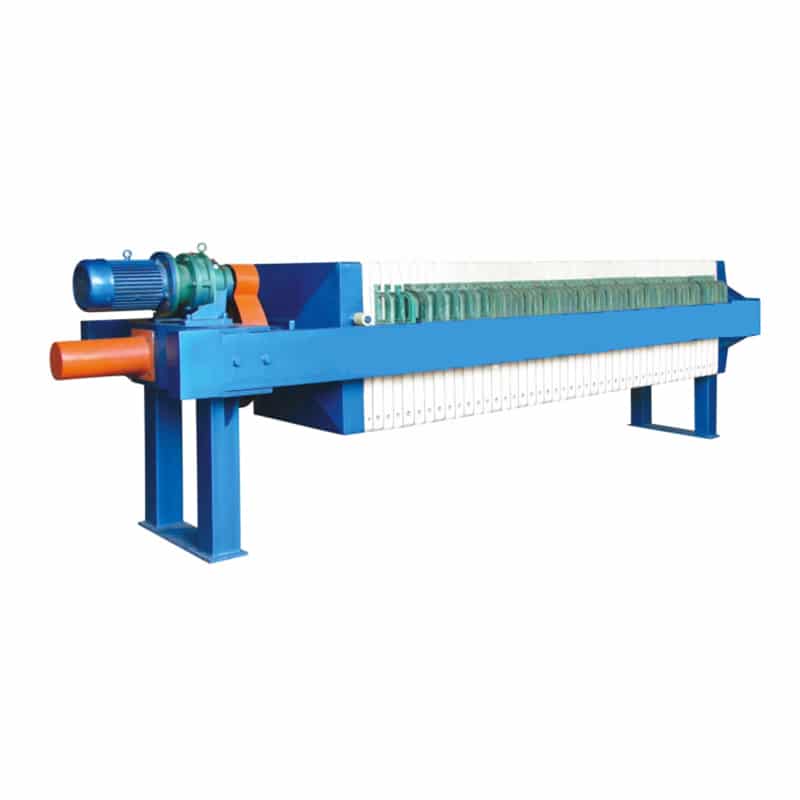
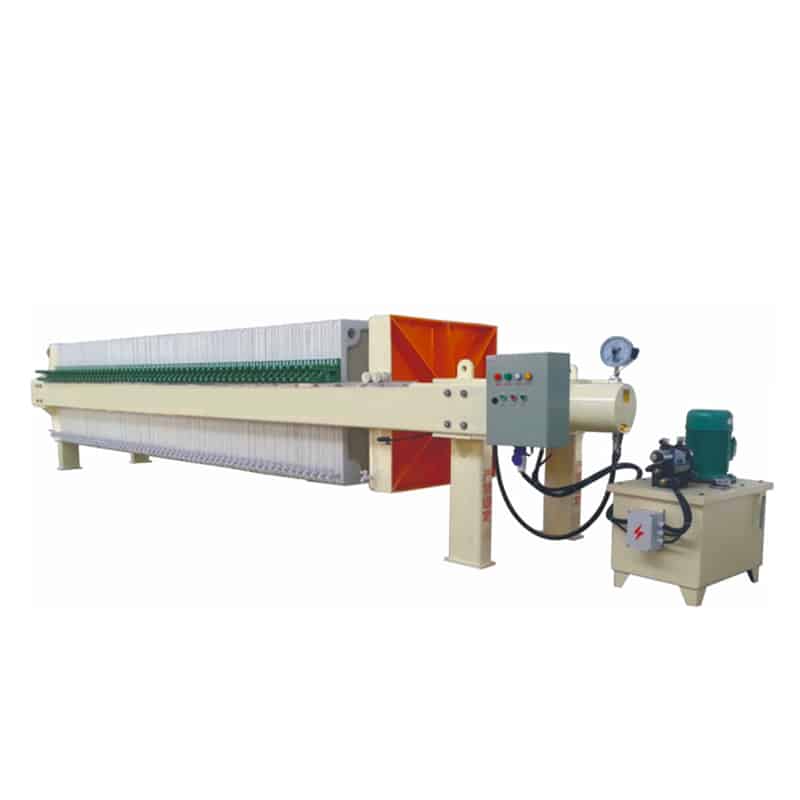
Filter press applications
Chemical industry
- Crystal separation: In chemical production, filter presses are widely used in the crystal separation process. By applying pressure, the crystals in solution are separated from the solvent to obtain a dry crystal product.
- Chemical wastewater treatment: The treatment of wastewater containing solid particles is an important task in the chemical industry. The high efficiency of filter presses in solid-liquid separation makes them ideal for the treatment of solid wastes in wastewater.
- Filtration of chemical reactants: In chemical reactions, filter presses are used to separate solid products or catalysts from the reactants, ensuring pure reaction products.
Pharmaceutical industry
- Pharmaceutical wastewater treatment: Wastewater from pharmaceutical processes can contain solid particles and drug residues. Filtration presses are used to dewater and collect solid waste from the wastewater to meet environmental standards.
- Pharmaceutical crystal separation: In the pharmaceutical process, the production of pharmaceuticals often involves the preparation of crystals. The efficiency of filter presses in crystal separation and dewatering is essential for the preparation of pharmaceuticals.
Mining industry
- Tailings processing: The mining industry generates large quantities of tailings, which contain solid particles and water. Filtration presses are used to process the tailings, dewater and collect the solid waste, reducing the volume of the waste.
- Slurry processing: When processing slurries, filter presses are used to remove water from the slurry to obtain a dry slag or solid product.
Other industry applications
- Food processing: In food processing, filter presses are used to separate suspended solid particles, dehydrate vegetable pulp, etc.
- Textile industry: Filter presses are used in the textile process to treat dyeing liquids and to dehydrate solid wastes after dyeing.
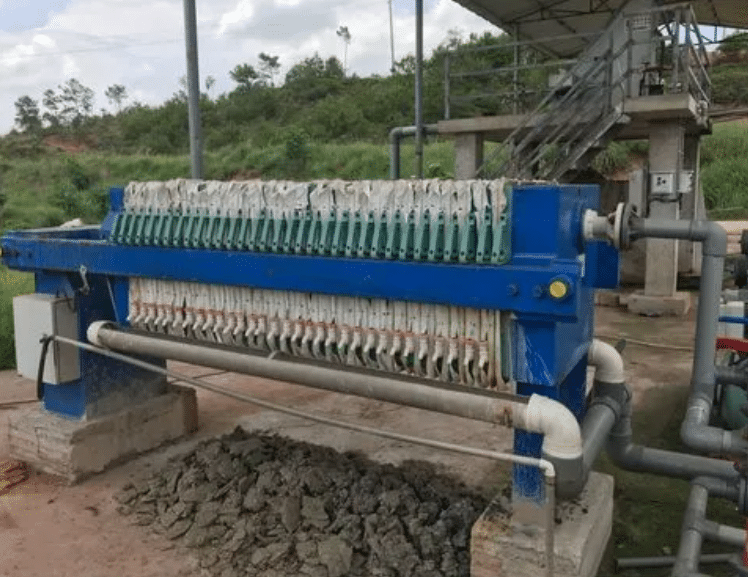
Superiority of filter presses
Batch operation:
- Flexibility: Filter presses are well known for their batch operation for relatively small but highly concentrated processing of liquid-solid mixtures. This mode of operation allows adjustments to be made for different materials or process conditions within each treatment cycle, increasing the flexibility of the equipment.
- Precise control: During batch processing, the operator has precise control over each cycle, adjusting parameters such as pressure and filtration time to meet specific production requirements. This control is important for applications that require a high degree of customizability.
Ability to handle high solids loads:
- Efficient dewatering: Filter presses have the ability to handle high solids loads. By applying sufficient pressure, the equipment is able to efficiently separate water from the solids, producing a dewatered solids product.
- Reduced waste volume: Handling high solids loads means more solids are processed per unit volume, which reduces the volume of treated waste. This is important for reducing the cost of waste treatment and disposal.
Superiority for special applications:
- High temperature and corrosive material handling: The Filter Press is suitable for handling high temperature and corrosive materials because its construction can often be made of high temperature and corrosion resistant materials. This makes it widely used in special chemical and metallurgical fields.
- Explosive and toxic substances handling: For some explosive or toxic substances, the filter press can be operated in a closed environment, reducing the impact on the operator and the environment.
- Fine particle separation: In some specialized applications, very fine particles need to be handled. Filtration presses can effectively separate fine particles by selecting the appropriate filter media to meet the demand for high precision separation.
Comparison between belt presses and filter presses
This table compares the differences between belt presses and filter presses in terms of principle of operation, mode of operation, solids loading capacity, application scenarios, etc. to help understand their similarities and differences more clearly.
| Features/Parameters | Belt Press Machine | Filter Press Machine |
| Working Principle | Continuous belt filtration system | Chamber formed by filter plates |
| Operation Mode | Continuous operation | Batch processing |
| Processing Scale | Large-scale | Small-scale, flexible |
| Solid Load Capacity | Suitable for relatively low loads | High capacity for solid loads |
| Application Scenarios | Wastewater treatment, municipal sludge dewatering, etc. | Chemical, pharmaceutical, special chemical, tailings treatment, etc. |
| Automation Level | High | Relatively lower, requires more personnel operation |
| Applicability | Large-scale production environments | Small-scale, flexible, handling special application scenarios |
| Precision Control | Relatively low | Requires precise control for each batch |
| Environmental Adaptability | Typically used for relatively clear liquids | Adaptable to handling high concentration liquid-solid mixtures |
Pressure operation and mechanical design
Comparison of the mechanical design of filter presses utilizing pressure for dewatering and belt presses and their performance analysis in handling different solids loads:
Filter presses utilize pressure for dewatering:
Principle of dewatering: The Filter Press achieves dewatering by applying pressure in the chamber consisting of the filter plates and the frame. The pressure forces the water through the filter media on the filter plates, forming a solid layer, while the dewatered liquid is discharged.
Performance features:
- High solids loading capacity: Filter presses have the capacity to handle high solids loads due to pressure operation for thick liquid-solid mixtures.
- Precise control: By adjusting the applied pressure, the dewatering process can be precisely controlled to meet the processing requirements of different materials.
Mechanical design of belt presses:
Dewatering principle: The belt press is dewatered by means of a continuous belt filtration system. The liquid-solid mixture moves on the belt and the water is discharged through the filter structure to form a solid layer.
Performance characteristics:
- Suitable for relatively clear liquids: Due to the nature of the mechanical design, the belt press is better suited for relatively low solids loadings and is suitable for processing relatively clear liquids.
- Continuous operation: The advantage of continuous operation makes it suitable for large scale continuous production environments.
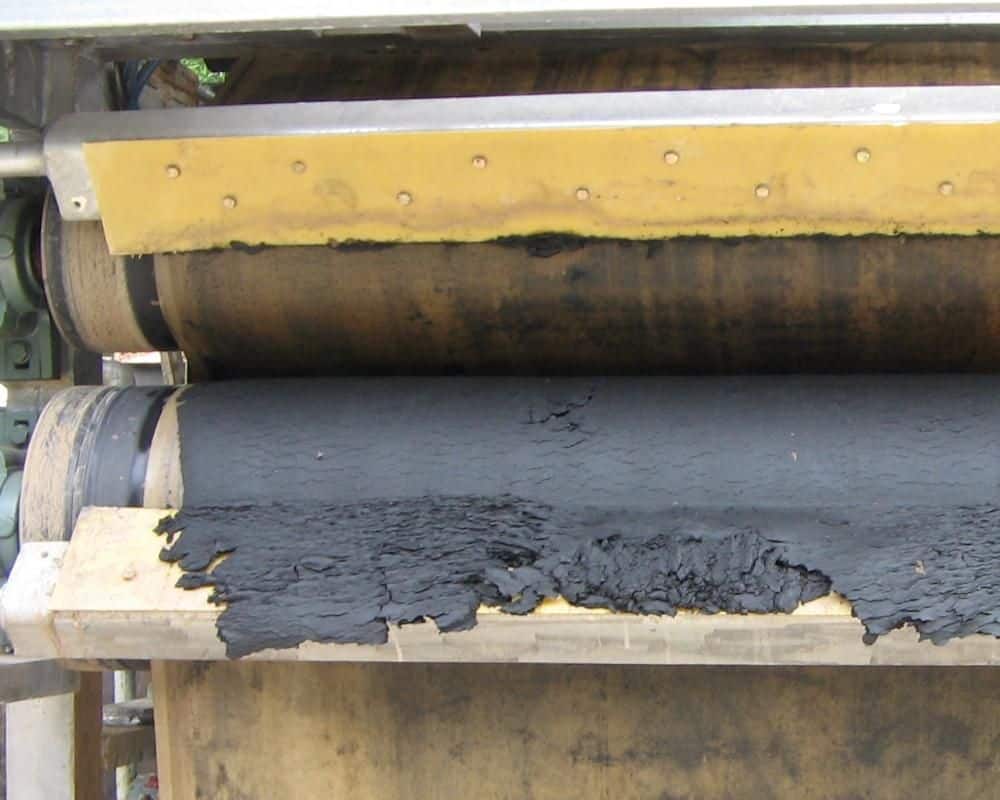
Performance comparison and analysis:
Solids load handling capacity
- Filtration presses: Suitable for handling liquid-solid mixtures with high concentrations and high solids loadings, capable of achieving high dewatering efficiencies.
- Belt Presses: Better suited to relatively low solids loading scenarios and provide good separation of clear liquids.
Accuracy and control
- Filtration presses: Operated by pressure, they offer a high degree of precision and control for applications where the dewatering process is critical.
- Belt presses: Relatively simple control due to continuous operation, suitable for production environments with relatively low accuracy requirements.
The importance of considering stock properties when selecting equipment
Slurry characteristics are critical factors when selecting filtration equipment. Here are some aspects of slurry characteristics to consider:
- Particle size: If the slurry contains large particles, you need to select equipment with the proper pore size to ensure that solids do not clog the filter media.
- Consistency: If the consistency of the slurry is high, equipment suitable for high-consistency material handling can be selected to improve efficiency and performance.
- State of the slurry: slurry may be liquid, semi-solid or a highly concentrated solid-liquid mixture, the choice of equipment needs to be adapted to the specific state of the slurry.
- Chemical properties: Consider the chemical properties of the slurry, especially the corrosion resistance of the equipment material. Some materials may have special requirements for the material of the equipment.
Summary
Belt presses offer advantages in terms of continuous operation and automation, while filter presses provide highly accurate dewatering through pressure operation for applications with stringent dewatering process requirements. Choosing the right equipment requires a thorough consideration of production requirements, slurry characteristics, automation and space constraints.
KUOSI offers various types of filter presses, if you need one, please come and ask us. KUOSI not only offers filter presses, but also sludge dryers, dosing systems, air flotation machines, blowers, disinfection systems and wastewater screens.
